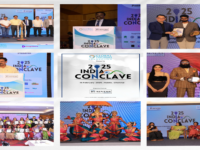Building in India is the way to make an impact: Jay Vitale, CEO of Air For Life

Born in the UK, into a Gujarati family that’s spent most of their time in Rajasthan, Jay Vitale who is the CEO of British clean air tech company Air For Life wants to give something back to the community. The mission for philanthropy does require another chapter to precede it, one that’s yet to be written. This is something that’s perplexing Vitale too, but he admits, luck hasn’t played its part. At least not yet. The unique air purification technology may prove to be a solid foundation to build with.
“There’s no greater need for our products than India,” says Vitale. Data doesn’t make for pretty reading. India has as many as 14 cities in the list of the 20 most polluted cities in the world globally, according to the latest World Health Organisation (WHO) and IQAir World Air Quality Report.
Air purifiers should be selling more than they do, though market numbers do indicate a higher adoption rate in the past couple of years. It is a market that’s dominated by a mix of legacy electronics brands such as Philips, Sharp and Honeywell, those who claim to be air quality specialists such as Dyson, IQAir and Blueair, as well as plucky new-age tech companies such as Xiaomi.
Also Read: Lucknow’s air quality several times worse than WHO guidelines: Greenpeace report
The company hopes its technology will play a role in differentiation. Unlike other home and commercial air purifiers which use multiple layers of filters, often the fabric HEPA (or high-efficiency particulate air filter) or a variation of metal mesh, Air For Life uses an evolution of something NASA used in the Mars Rover in 2020. It is called PCO, or photocatalytic oxidation. It was used in space, to filter an indoor gas emission, called ethylene. Incidentally, a lot of the fresh fruits and vegetables, ripen because of this gas.
“India is the hottest market for us to get into you know, we’re even happy to lower the cost price, so that we’re able to have some kind of market entry into India,” says Vitale, a generous dose of regret all too apparent. “I’m willing to do whatever it takes really, to be honest with you. It’s just that we need to be paired with the right support,” Vitale’s grit unmistakable.
“We’ve fine-tuned and improved the original NASA technology by converting it into a nano technology. We’ve made sure that there’s no harmful by-products because normally this kind of technology produces ozone,” says Vitale. The Air For Life purifiers therefore don’t have any replacement parts or consumables, such as filters that need to be changed periodically otherwise. That, for a consumer, saves on cost later.
The advantage of negative ions is they attach to any airborne or even surface resident particles including virus and bacteria, de-nature it and the addition of the weight drops these below a human’s breathing height. “We had to shrink the particle size down to nano size. By doing that, we’ve increased the surface area so we can increase the rate of reaction,” Vitale explains the changes done to the negative ion particle size.
The other advantage being, it doesn’t create ozone ions, but instead, something classified as superoxide ions that are reactive and can additionally sanitise impurities.
The second element in Air For Life’s purification products is the use of ultraviolet, or UV. While this has been seen in many air purifiers over the years, this is a slightly different take. Instead of UV bulbs which are commonplace in purifiers and indeed standalone UV sanitizer boxes, there are UV LEDs in place. The dual advantage – they are much smaller in size and last much longer. Five years, according to Vitale, with regular daily usage of the purifier.
Since UVs are not limited by the design of a filter mesh, they will purify the entirety of the volume of air that’s passing through the purifier, including particles smaller than 0.3 micron in size. That, incidentally, is the limit for HEPA filter purifiers. Which means viruses and bacteria are dealt with too.

Atul Tiwari is a seasoned journalist at Mumbai Times, specializing in city news, culture, and human-interest stories. With a knack for uncovering compelling narratives, Atul brings Mumbai’s vibrant spirit to life through his writing.






